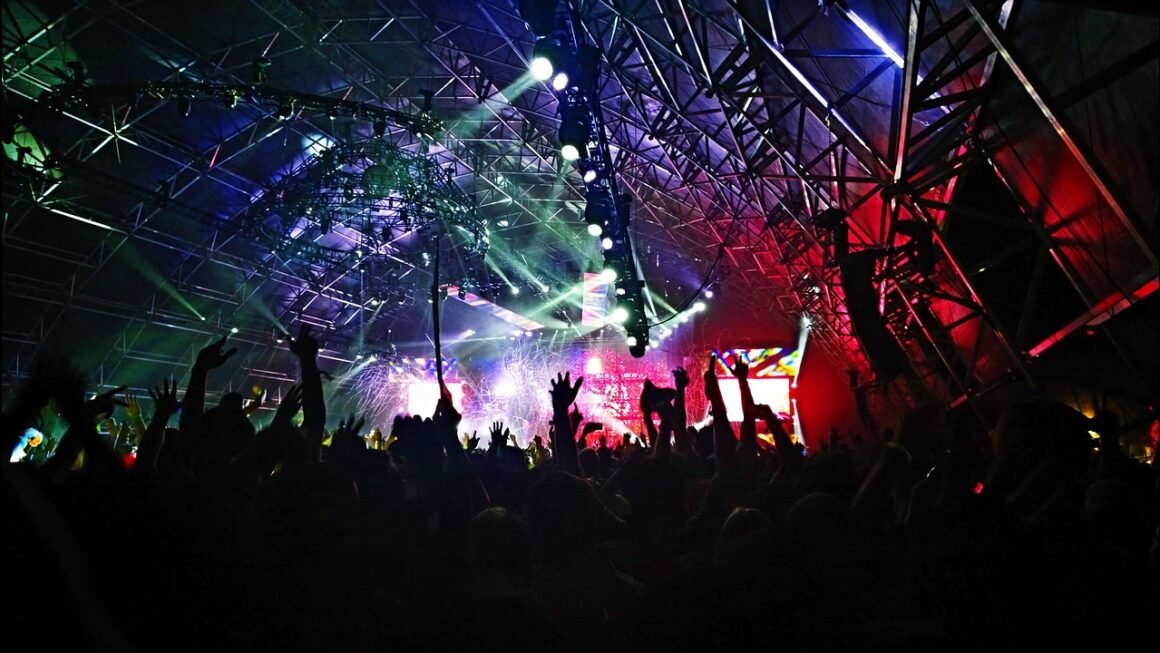Movies! They transport us to different worlds, introduce us to unforgettable characters, and evoke a spectrum of emotions – from laughter and joy to tears and suspense. They’re more than just entertainment; they’re a cultural touchstone, reflecting our society, history, and shared human experience. This blog post will dive deep into the captivating world of movies, exploring their history, genres, impact, and how to get the most out of your movie-watching experience.
The Evolution of Cinema: From Silent Films to Streaming Giants
Early Beginnings and the Silent Era
- The late 19th century witnessed the birth of cinema, with pioneers like the Lumière brothers and Thomas Edison creating the first moving pictures.
- Silent films, characterized by their lack of synchronized sound, relied heavily on visual storytelling, acting, and intertitles.
- Key films of this era include “The Great Train Robbery” (1903), often considered the first narrative film, and Charlie Chaplin’s iconic works.
- The silent era showcased incredible creativity in filmmaking techniques, paving the way for future advancements.
The Arrival of Sound and Color
- The introduction of synchronized sound in the late 1920s, with “The Jazz Singer” (1927), revolutionized the industry.
- “Steamboat Willie” (1928), the first Mickey Mouse cartoon with synchronized sound, cemented Disney’s place in animation history.
- The development of Technicolor in the 1930s brought vibrant color to the screen, enhancing the visual experience. “Gone with the Wind” (1939) is a stunning example.
- Sound and color expanded the possibilities for storytelling and character development.
The Golden Age of Hollywood
- The 1930s and 1940s are often referred to as the Golden Age of Hollywood.
- Major studios like MGM, Warner Bros., and Paramount dominated the industry, producing a vast array of films.
- Iconic actors and actresses, such as Humphrey Bogart, Ingrid Bergman, and Cary Grant, rose to fame during this period.
- Popular genres included musicals, dramas, comedies, and Westerns.
- This era established many of the storytelling conventions still used today.
The Rise of Independent Cinema and New Hollywood
- The late 1960s and 1970s saw the emergence of independent cinema and “New Hollywood.”
- Directors like Stanley Kubrick, Francis Ford Coppola, and Martin Scorsese pushed creative boundaries.
- Films became more experimental and tackled socially relevant themes.
- Examples include “Easy Rider” (1969), “The Godfather” (1972), and “Taxi Driver” (1976).
- Independent cinema provided a platform for diverse voices and perspectives.
Modern Blockbusters and the Digital Age
- The late 20th and early 21st centuries have been dominated by big-budget blockbusters and franchise films.
- Special effects and CGI have become increasingly sophisticated.
- Streaming services like Netflix, Amazon Prime Video, and Disney+ have transformed the way we consume movies.
- Marvel Cinematic Universe (MCU) and Star Wars franchises are prime examples of the blockbuster phenomenon.
- The digital age has democratized filmmaking, making it easier for aspiring filmmakers to create and distribute their work.
Exploring Different Movie Genres: A World of Choices
Action and Adventure
- Characterized by high-octane thrills, stunts, and exciting narratives.
- Examples include:
“Die Hard” (1988)
“Raiders of the Lost Ark” (1981)
“Mission: Impossible” series
- Often feature heroic protagonists and formidable antagonists.
- Subgenres include spy films, superhero films, and disaster movies.
Comedy
- Designed to elicit laughter and amusement.
- Examples include:
“Monty Python and the Holy Grail” (1975)
“Bridesmaids” (2011)
“The Hangover” (2009)
- Subgenres include romantic comedies, slapstick comedies, and satire.
- Relies on humor, wit, and comedic timing.
Drama
- Focuses on realistic characters and emotionally resonant stories.
- Examples include:
“The Shawshank Redemption” (1994)
“Schindler’s List” (1993)
“Moonlight” (2016)
- Often explores themes of love, loss, redemption, and social issues.
- Character-driven narratives that emphasize emotional depth.
Horror
- Aims to evoke fear, suspense, and dread in the audience.
- Examples include:
“The Exorcist” (1973)
“Halloween” (1978)
“Get Out” (2017)
- Subgenres include slasher films, psychological horror, and supernatural horror.
- Employs techniques such as jump scares, suspenseful music, and disturbing imagery.
Science Fiction and Fantasy
- Explores futuristic or fantastical settings and concepts.
- Examples include:
“2001: A Space Odyssey” (1968)
“The Lord of the Rings” trilogy
“Blade Runner” (1982)
- Often tackles themes of technology, morality, and the human condition.
- World-building and imaginative storytelling are key elements.
Animation
- Brings characters and stories to life through animated visuals.
- Examples include:
“Toy Story” (1995)
“Spirited Away” (2001)
“Spider-Man: Into the Spider-Verse” (2018)
- Can be aimed at children or adults, covering a wide range of genres.
- Techniques include traditional animation, CGI animation, and stop-motion animation.
The Impact of Movies on Society and Culture
Reflecting and Shaping Social Norms
- Movies often reflect the social and cultural values of their time.
- They can also challenge existing norms and promote social change.
- Examples:
Films addressing racial inequality (e.g., “Guess Who’s Coming to Dinner,” 1967).
Movies promoting gender equality (e.g., “Hidden Figures,” 2016).
Films raising awareness about environmental issues (e.g., “An Inconvenient Truth,” 2006).
- The portrayal of diverse characters and perspectives in movies can contribute to greater understanding and empathy.
Influencing Fashion and Trends
- Movies have a significant influence on fashion, trends, and popular culture.
- Iconic characters and their costumes often inspire fashion trends.
- Movie soundtracks can propel songs to the top of the charts.
- Examples:
The influence of “Breakfast at Tiffany’s” (1961) on fashion.
The popularity of the “Saturday Night Fever” (1977) soundtrack.
The impact of “Top Gun” (1986) on aviator sunglasses.
- Movie-inspired merchandise, such as toys, clothing, and collectibles, generates significant revenue.
Providing Escapism and Entertainment
- Movies offer a form of escapism, allowing viewers to temporarily escape from their daily lives.
- They provide entertainment and enjoyment, reducing stress and promoting relaxation.
- Movies can also be a source of inspiration and motivation.
- A good movie can transport you to another world, make you laugh, cry, or feel a range of emotions.
Promoting Dialogue and Discussion
- Movies can spark dialogue and discussion about important social and political issues.
- They can raise awareness about different cultures and perspectives.
- Film clubs and online forums provide platforms for discussing movies and their themes.
- Watching movies with friends and family can lead to meaningful conversations and shared experiences.
Getting the Most Out of Your Movie-Watching Experience
Choosing the Right Movie
- Consider your mood and preferences when selecting a movie.
- Read reviews and ratings from critics and other viewers.
- Explore different genres and directors to expand your horizons.
- Use streaming services and online databases to find recommendations.
- Ask friends and family for their favorite movie suggestions.
Creating the Perfect Viewing Environment
- Dim the lights and minimize distractions.
- Ensure comfortable seating and a good viewing angle.
- Use a high-quality screen and sound system if possible.
- Prepare snacks and drinks to enjoy during the movie.
- Turn off your phone and other electronic devices to avoid interruptions.
Engaging Actively with the Movie
- Pay attention to the details of the story, characters, and cinematography.
- Listen carefully to the dialogue and soundtrack.
- Consider the themes and messages of the movie.
- Reflect on how the movie makes you feel.
- Discuss the movie with others after watching it.
Exploring Film History and Criticism
- Learn about the history of cinema and the evolution of filmmaking techniques.
- Read film criticism and analysis to gain a deeper understanding of movies.
- Attend film festivals and screenings to discover new and independent films.
- Take a film studies course to learn about the art and craft of filmmaking.
Conclusion
Movies are more than just entertainment; they are a powerful form of art that reflects and shapes our society. From the silent era to the age of streaming, cinema has constantly evolved, bringing us unforgettable stories and characters. By exploring different genres, engaging actively with movies, and learning about film history, you can enhance your movie-watching experience and appreciate the art of filmmaking even more. So, grab some popcorn, dim the lights, and immerse yourself in the captivating world of movies!



